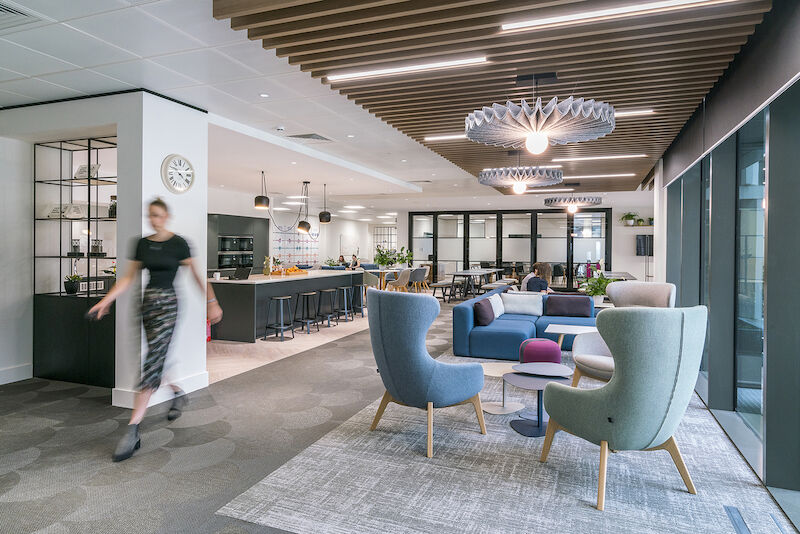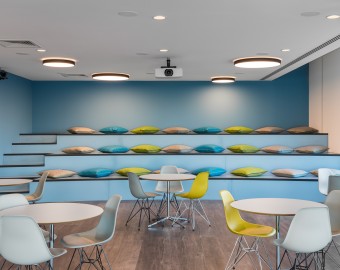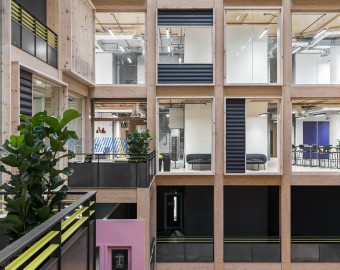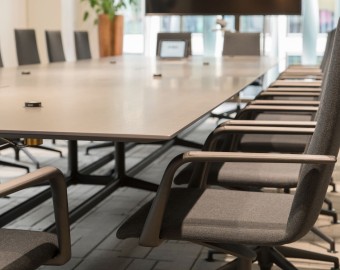How to create inclusive office design
As a large number of businesses return to their offices – whether full-time or with a hybrid model of office and home working – the requirement to accommodate the needs of a diverse workforce is greater than ever.
Creating an inclusive office environment relies on a number of factors and achieving this successfully can be a big draw, especially to a younger generation.

Designing an office layout that works for everyone is challenging, but understanding the needs of your workforce will ensure requirements are at least taken into consideration. Needs are likely to vary with generation, disabilities and familial commitments. To address the sometimes-conflicting needs of the population, inclusive office design tends to be holistic in nature and can, if planned carefully, hand back to the individual a degree of autonomy over where and how they work.
Post pandemic shift leaving workers feeling more engaged at work
A Gallup poll in 2016 – pre-pandemic – revealed that only 8% of those surveyed were engaged at work. With significant implications on productivity and the overall culture of our organisations, this signified a direct correlation between engagement and job satisfaction. Post pandemic, and the now widespread flexibility of many workers, we now know that a greater self-determination as to how, where and when we work makes us feel far more engaged and valued and is likely to engender increased levels of creativity and innovation. A flexible working policy will, without doubt, contribute to increased productivity and wellbeing, but we now need to focus on what we want our offices to provide in the wake of this change.
Inclusive office design does not mean open-plan offices
Exclusively open-plan office layouts were not necessarily the most inclusive and may not be as relevant as they once were; we are seeing an increase in a requirement for more informal spaces where people can choose to work in a more relaxed atmosphere. That said, new ways of working don’t suit everyone, so we need to be cognisant of accommodating employees who feel more comfortable with a traditional approach. A successful inclusive office design will achieve a balance between flexibility, choice and practicality, and it should have been created after a thorough workspace consultancy process to ensure inclusivity.
At a fundamental level, studies have indicated that traditional office design had its faults. These, coupled with inferior air quality and poor lighting, will have increased absenteeism due to illness. Noise levels have been difficult to manage, leading to stress and animosity. Hybrid working can be of benefit to offset these issues but inclusive and good office design should help to balance out the needs of the workforce, creating happy and productive businesses.
A summary from Carol Chinn
For Carol Chinn, design partner at The Workspace Consultants, there’s little doubt that a poorly designed office can have a big impact on employees’ physical and mental wellbeing. ‘In our experience, the best performing companies are the ones that listen to their staff and respond to their individual needs,’ comments Carol. 'Here at Workspace we like to start with detailed e-surveys and departmental interviews to gain an understanding of how current processes work and how we might improve things with a new design. Ultimately, creating a truly inclusive office design that caters for a diverse workforce requires an understanding of your team as well as a willingness to embrace change. It should all be thoroughly planned and professionally executed in order to ensure success’.
Get in touch
The Workspace Consultants offer office design and project management in Cambridge and London, so if you are looking to incorporate diversity in your office design, why not contact us today for an initial discussion?




